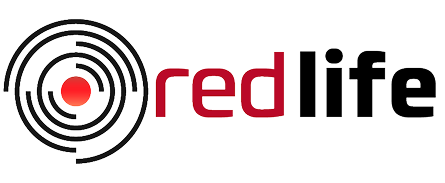
FAQ
All You Need to Know
FAQ
Experience pain relief, glowing skin, and faster recovery.
FAQ
Collapsible content
What is red light therapy?
Red light therapy (RLT) is a non-invasive treatment that uses low-wavelength red and near-infrared light to promote healing, reduce inflammation, and improve skin and cellular function.
How does red light therapy work?
RLT works by penetrating the skin and stimulating mitochondria (the powerhouse of cells), which increases ATP (energy) production. This helps cells function better, leading to faster healing, reduced inflammation, and improved overall health.
What are the benefits of red light therapy?
- Skin health (reduces wrinkles, acne, scars)
- Pain relief (arthritis, joint pain, muscle recovery)
- Hair growth (stimulates follicles, helps with thinning hair)
- Sleep improvement (regulates melatonin production)
- Boosts energy & mood (supports mitochondrial function)
- Wound healing (helps with burns, cuts, and injuries)
- Autoimmune conditions (helps to reduce inflammation, improve cellular function, and modulate the immune response)
Is red light therapy safe?
Yes! RLT is non-invasive, painless, and has no UV rays, making it safe for regular use. However, eye protection is recommended when using near the face.
Is it safe to look at the lights when turned on?
We suggest wearing the protective glasses (provided) or at least keeping your eyes closed when red and NIR light is exposed directly to your face.
Can children aged 12 start using these devices? What is the recommended age?
Red light therapy devices use red light to stimulate the skin cells and promote cell regeneration and repair, which has certain skin rejuvenation and anti-aging effects. However, for children, the use of red light therapy devices needs to be cautious because their skin is more delicate and sensitive than adults, and they may be more sensitive to light.
Are there any side effects to using red light therapy?
Red light therapy is generally considered safe, non-invasive, and free from significant side effects when used as directed. It is a natural treatment that has been shown to reduce pain and inflammation without the risks associated with prescription medications or invasive procedures.
Should I remove clothing during red light therapy sessions?
For optimal results, it's recommended to expose the targeted area directly to the light, as clothing can block light penetration and reduce treatment efficacy.
Should I remove jewellery during red light therapy sessions?
Jewellery: It’s best to remove all metal jewelry before using the device, unless the jewelry is non-metallic, such as silicone or fabric-based, which is generally safe to wear.
Here’s why:
- Heat Retention – Metal jewelry can absorb and retain heat, which might lead to discomfort or even minor burns during prolonged exposure.
- Reflection & Interference – Metals can reflect or absorb some of the light wavelengths, potentially reducing the effectiveness of the therapy in certain areas.
- Skin Contact Issues – Some metals may react with light and heat, causing skin irritation or discoloration.
Is red light therapy safe to use for pregnant women?
While red light therapy is generally safe, it’s best to consult with a healthcare provider before using it during pregnancy, especially if applying it to the abdomen or lower body.
Can I use red light therapy on areas with tattoos?
While red light therapy is generally safe, it's recommended to monitor the tattooed area for any adverse reactions during initial sessions, as individual responses can vary.
Is red light therapy suitable for pets?
Red light therapy has been used for animals; however, it's essential to consult with a veterinarian before using it on pets to ensure their safety.
How long does it take to see results?
- Skin improvements: 2–4 weeks
- Pain relief & muscle recovery: Immediate to 2 weeks
- Hair growth: 3–6 months
- Sleep & mood: Within a few sessions
Does red light therapy help with weight loss?
RLT may support fat loss by improving metabolism, reducing inflammation, and promoting muscle recovery. However, it works best when combined with diet and exercise.
Can I use red light therapy with skincare products?
Yes! Using antioxidants like vitamin C may enhance results. However, avoid light-sensitive ingredients like retinol before RLT, as it may cause irritation.
Should I remove makeup or sunscreen before using RLT?
Yes! Makeup and sunscreen can block the light from penetrating your skin, reducing effectiveness.
Does red light therapy work for hair growth?
Yes! RLT can stimulate hair follicles and increase circulation, helping with hair loss (especially in androgenic alopecia or thinning hair).
Can red light therapy help with acne?
Yes! It reduces inflammation, speeds up healing, and may help control oil production, making it beneficial for acne-prone skin.
Can I overuse red light therapy?
More isn’t always better. Overuse can lead to diminishing returns. Stick to recommended times (5–20 minutes per session, up to daily use).
Can red light therapy help in treating cancer?
While red light therapy has been shown to help with cancer, it is advisable to consult with your medical professional for the best possible results.
Can I use red light to cure cataracts, macular degeneration, or other eye-related illnesses?
Red light therapy has shown some potential benefits for eye health, but it should be used with caution.
Potential Benefits:
- Some studies suggest that exposure to specific wavelengths (especially around 670 nm) may help improve mitochondrial function in retinal cells, potentially benefiting age-related vision decline.
- May Help with Eye Conditions: Early research indicates it could help with conditions like age-related macular degeneration (AMD) and dry eye syndrome.
- Might Reduce Eye Strain: Some users report reduced strain from screen use.
Safety Considerations
- Avoid High Intensity: Intense or prolonged exposure to bright red or near-infrared light (especially above 700 nm) could be harmful.
- Proper Wavelength Matters: Studies suggest low-intensity red light (around 670 nm) is beneficial, but infrared (above 800 nm) may penetrate too deeply, potentially causing harm.
- Avoid Direct Laser Exposure: Laser-based red light therapy devices can damage the retina if not used properly.
In summary, while red light therapy presents potential benefits for certain aspects of eye health, it is essential to approach its use cautiously. Consulting with an eye care professional before considering RLT is strongly recommended to ensure safety and appropriateness for individual conditions.
Can red light therapy help in the healing of wounds after surgery?
If macular degeneration has already begun, red light therapy may help accelerate post-surgical wound healing, reduce inflammation, and support overall tissue regeneration. Red light therapy might also offer protective or restorative benefits to retinal tissue. Always coordinate with your healthcare provider to ensure the treatment is appropriate and safely tailored to your specific needs.
Can red light therapy help with back pain? And how can I do this while seated in my wheelchair?
Red light therapy is a safe, non-invasive, and drug-free method to help manage back pain, even from a seated position in a wheelchair. With the right equipment and setup, you can integrate RLT into your daily routine to improve pain, circulation, and mobility, all from the comfort of your chair.
Is red light therapy safe to use on Breast Implants?
Red light therapy appears generally safe for individuals with breast implants when used correctly. While no high-quality clinical trials have definitively ruled out risks, anecdotal use and preliminary data suggest it's not harmful under typical therapeutic conditions. Caution and medical guidance are advised, particularly when applying RLT directly to the breast area.







